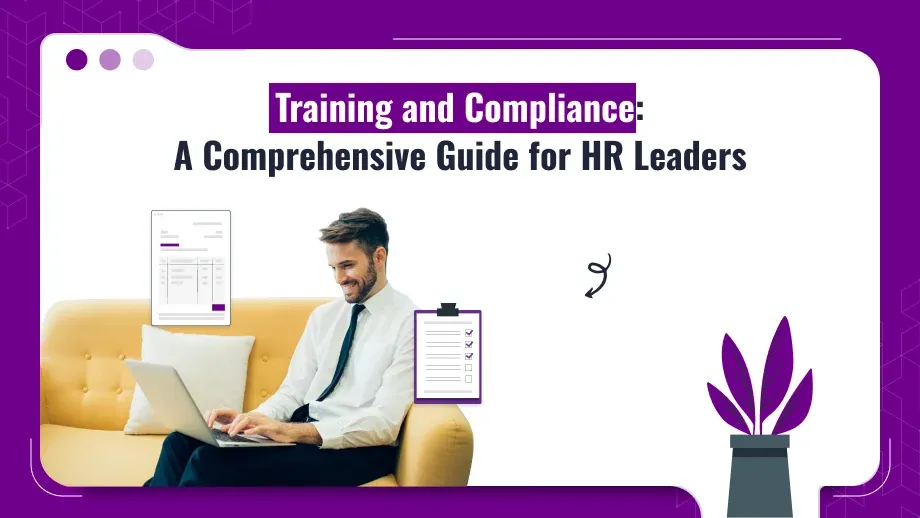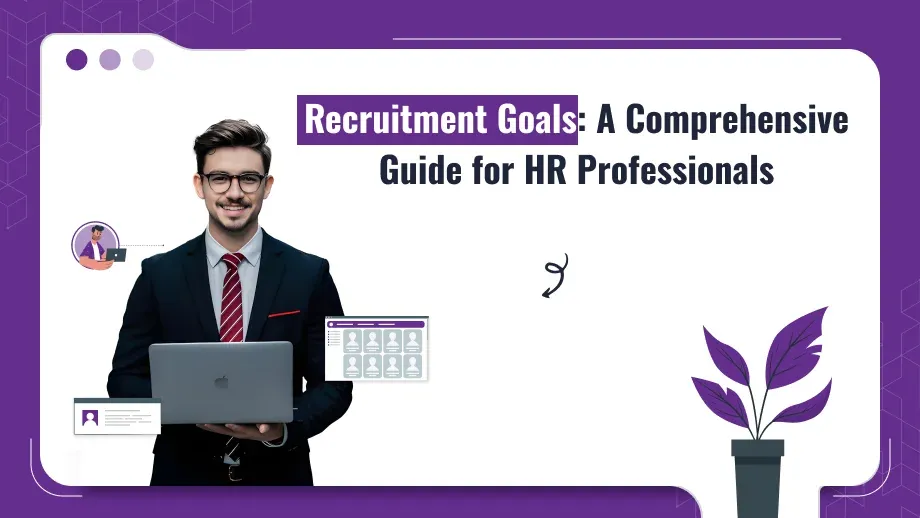
In today’s fast-paced business world, training and compliance is no longer an add-on – it’s the basis of profitable commerce. With changing policies and the expanding complexity of place of business policies, HR, CHROs, and CEOs are required to ensure their organizations are realized and compliant with industry laws. Viable compliance and training programs secure the company from lawful dangers and create an environment of belief, accountability, and productivity.
For all businesses, employee compliance preparation is required to meet legal requirements, minimize dangers, and construct a moral workplace. For case, data protection laws like GDPR and anti-harassment arrangements are key in today’s workforce. Ensuring workers are up to date with these necessities is key to keeping up both lawful compliance and corporate integrity.
What is Compliance Training?
Compliance training is the handle of educating workers about the rules, laws, and controls that affect their occupations. The objective is to guarantee workers know what is anticipated of them to keep up legitimate, moral, and regulatory standards in the workplace.
training and compliance cover themes like workplace security, anti-harassment policies, data security, and industry-specific controls like monetary laws (e.g. SOX) or healthcare laws (e.g. HIPAA). Without it, employees may incidentally put themselves and the company at the chance of lawful and financial results.
Moreover, what is compliance training? It’s not just about legal frameworks but also about creating a culture where employees take ownership of their roles. This means understanding company policies, recognizing unethical practices, and creating a workplace where everyone feels safe. By embedding compliance into daily operations organizations can protect their brand and minimize liabilities.
Why Training and Compliance Matters
Legal Protection: Training and compliance for employees reduce the hazard of legitimate breaches whether it’s security, information security, or anti-discrimination. Normal training ensures workers know what’s expected of them and protects the company from claims, fines, and penalties.
Operational Effectiveness: Representatives who know the rules are less likely to make expensive botches. For illustration preparing representatives on data protection regulations prevents breaches that can lead to financial losses or administrative penalties.
Ethical Environment: Organizations that prioritize compliance make a workplace culture of belief, keenness, and transparency. Compliance training for employees goes past instructing legitimate measures – it ingrains individual responsibility and shared obligation among employees and makes a more ethical and cohesive environment.
Employee Confidence: When employees know their role within the compliance framework they feel more secure in their responsibilities knowing they are following the right process. This builds confidence and reduces workplace stress.
Types of Compliance Training
Legal Compliance Training:
This covers general workplace regulations such as wage laws, workplace safety, and employee rights. All employees need to know their legal obligations to avoid internal conflicts and external legal issues.
Moral Compliance Training:
Teaching employees about the company’s code of ethics such as anti-bribery laws and conflict of interest policies is key to maintaining a strong ethical culture. These training sessions help employees recognize unethical behavior and take action against it.
Data Privacy Compliance Training:
In a data-driven world, employees need to learn about privacy laws like GDPR and HIPAA. Mismanaging touchy statistics can lead to extreme criminal effects which include fines and popularity damage.
Industry-Specific Compliance Training:
Every industry has its possess set of laws and regulations. For example, healthcare experts need to be prepared for persistent confidentiality under HIPAA, and financial services employees need to get anti-money laundering rules and financial reporting guidelines like SOX.
Workplace Security and Wellbeing Compliance:
In businesses like construction, vitality, or manufacturing workplace security compliance is basic to anticipate mischances and ensure workers follow wellbeing and security laws.
Best Practices for Employee Compliance Training
Engaging Content:
Training must be interactive and engaging to keep attention. Quizzes, scenarios, and gamification ensure employees participate and retain information.
Tailored Training Modules:
Not all employees need the same training. Tailor your compliance training to employees based on their roles. For example, a data analyst will need extensive GDPR training, and a construction worker may need more detailed safety protocols.
Frequent Updates:
Laws and regulations change constantly. Compliance training must reflect these changes so employees are always up to date.
Use Technology:
Many companies utilize HRMS Payroll Software in India to screen representatives preparing in advance. These stages ensure compliance preparation is coordinated into the representative lifecycle from onboarding to ongoing development.
Microlearning:
Deliver training in short, bite-sized sessions to improve retention and engagement. Employees will absorb and apply information better when it’s presented in manageable chunks.
Overcoming Challenges in Compliance Training
Even the best-designed training and compliance programs can hit roadblocks. Here’s how to overcome them:
- Employee Apathy: Compliance training is often boring or irrelevant. To combat this make training more engaging through gamification or real-life case studies that demonstrate the practical application of compliance.
- Tracking and Monitoring: Ensuring all employees complete their required training can be tough, especially in large organizations or remote work environments. Using Remote Employee Monitoring tools HR leaders can ensure everyone including remote workers complete their compliance training on time.
- Consistency Across Locations: Global organizations face the challenge of maintaining consistent employee compliance training across different regions. Cloud-based platforms allow for standardized training delivery across all geographic locations.
Use Communication to Boost Compliance
A key portion of successful training and compliance programs is the Role And Importance Of Communication cannot be exaggerated when it comes to compliance and training activities. HR leaders must guarantee communication is clear, steady, and open so workers feel engaged to inquire questions and look for clarification.
- Clear Communication of Compliance Policies: Employees need to know what’s anticipated of them. HR groups must communicate compliance arrangements and how they tie in with company values.
- Open Channels for Feedback: Workers ought to feel comfortable sharing their concerns almost compliance without fear of reprisal. Open communication builds belief and can help distinguish compliance crevices before they become greater problems.
Consistent Reminders and Reinforcement: Compliance shouldn’t be a one-time conversation. HR departments ought to reliably remind workers of their duties through follow-up emails or inside informing stages. Consider utilizing types of triggered emails, which can automatically send updates to almost upcoming or past due compliance preparing sessions, reinforcing the importance of completing these courses.
Ready to enhance your training and compliance process?
Explore how our intuitive, time-saving, and compliance-driven solutions can simplify compliance management.
Compliance in the Hiring Process
Compliance begins with enlisting the right individuals. By counting compliance in the hiring handle companies can guarantee new hires know the significance of regulatory compliance from day one. HR professionals should include compliance-related questions in the meet handle so candidates are not as it were capable but too morally aligned with the company’s values.
- Onboarding Compliance Training: Include compliance training in the onboarding handle so unused enlists are up to speed on the basic directions before they begin their work. This should incorporate not only fair general compliance points but also role-specific training.
- Background Checks and Lawful Compliance: A compliant hiring process should include careful background checks to ensure new employees have a clean legal history. Legal compliance amid hiring protects the company from future issues.
- Ongoing Training: The best employees grow with the company and compliance should evolve as their role grows. HR departments should continue to offer compliance refresher and new modules as employees take on new roles within the organization.
By including compliance training for employees in the hiring process companies can set the tone from the start and have a compliant workforce from day one.
Measuring the Success of Compliance Programs
Completion Rates:
A basic metric to track is whether employees have completed the required training within the designated time frame. Use HRMS Payroll Software or Applicant Tracking Systems to automate this process and ensure completion rates are recorded for every employee. High completion rates mean employees are aware of their compliance obligations.
Assessment Scores:
After each training module employees should be tested to measure their understanding of the content. Assessment scores will give you an idea of how well the training was understood and retained. If scores are low it may mean the content needs to be adjusted or more training sessions are needed to reinforce the material.
Reduction in Compliance Violations:
The most telling metric of successful compliance training for employees’ software is a discount on the wide variety of compliance breaches or violations after training. Track violations regularly and compare records before and after the training to see how it works in practice.
Employee Feedback:
Get feedback from employees on the quality and relevance of the training to improve future sessions. You can gather feedback through anonymous surveys or feedback forms. Are employees finding the training helpful? Do they understand how it applies to their day-to-day work? Their feedback is invaluable for continuous improvement.
Audit Results:
Regular internal reviews will supply you with records of how nicely representatives are following compliance controls. A wonderful overview result will exhibit that getting ready has been profitable in guaranteeing representatives get it and observing legit and internal guidelines.
The Future of Training and Compliance
Artificial Intelligence (AI) and Machine Learning:
AI is as of now being utilized in compliance devices to screen worker behavior and anticipate potential zones of non-compliance. For illustration, AI can analyze worker actions to recognize who may be at hazard of breaching directions. This data-driven approach permits organizations to offer preparation and compliance to workers sometime recently breached.
Virtual Reality (VR) Training:
In high-risk businesses such as healthcare or fabricating VR preparation and compliance are getting to be more well known. VR permits representatives to hone compliance-related errands in a mimicked environment. For illustration, healthcare laborers can utilize VR to hone taking care of touchy quiet data without compromising real-world privacy.
Gamification of Training Programs:
To increment engagement more organizations are joining gamification components into their Training and Compliance modules. Representatives can win focuses, identifications, or rewards for completing modules or scoring tall on appraisals. This makes the learning involvement more fun and empowers representatives to take compliance seriously.
Global Compliance Management:
As businesses end up more globalized overseeing compliance over diverse purviews presents interesting challenges. Organizations must adjust their employee compliance training programs to reflect local laws and social standards while keeping up with worldwide measures. Cloud-based learning administration frameworks (LMS) make it simpler for worldwide companies to convey standardized preparation that can be customized to neighborhood requirements.
Personalized Compliance Training:
One-size-fits training and compliance programs are getting to be less viable as companies recognize the significance of role-specific preparation. AI can offer assistance in personalizing preparing modules to provide substance most pertinent to each employee’s work work. For this case, a money-related investigator may get more seriously prepared on anti-money washing laws whereas a promoting proficient may center more on information protection regulations.
The Role of Data in Shaping Future Compliance Programs:
As training and compliance becomes more data-driven organizations are using analytics to continuously improve their compliance training for employees. By analyzing employee performance and compliance data HR leaders can identify trends, forecast risks and adjust training accordingly.
Conclusion
In summary training and compliance is commerce fundamental. As directions and measures alter so must the company’s approach to its workforce. A well-designed representative preparing and compliance program does more than fair tick the legitimate boxes – it reinforces the organization’s moral center, ensures it from expensive lawful dangers, and advances a culture of responsibility.





